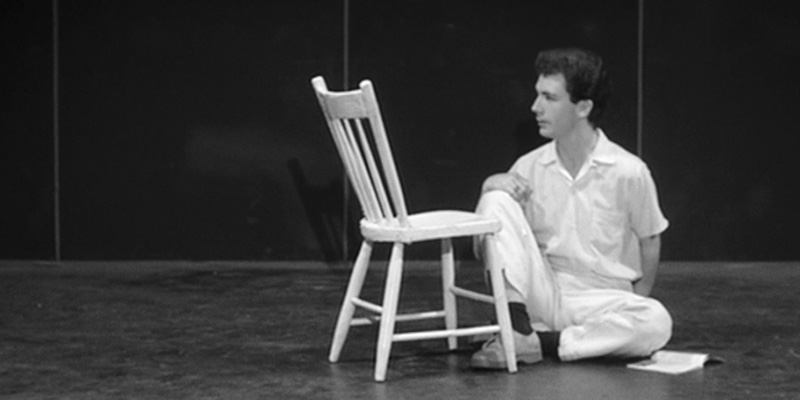‘The Chairy Tale’ is a 10-minute long short film directed by Norman McLaren and Claude Jutra, that brings to us the story of a conflicted relationship between a man (Claude Jutra), who just wants to sit and read his book in peace, and a chair, who refuses to be sat upon. The uncooperative chair moves away every time that man tries to sit on it. The initial few minutes showcase his futile attempts at trying to get seated on this chair, which seems to hold some kind of a grudge against the man, making us wonder if he committed some kind of a grave misdeed that would have resulted in the chair’s refusal to be sat upon. The chair and the tantrums it throws toward the man reminds us of a scene between a couple who have had a fight and the woman who does not budge until the man apologises in a manner acceptable to her. The mixture of stop animation and live action produces a lively and amusing short film that catches our attention until the very end, despite the cast list having just Jutra and a chair.
The chair fluidly moves around the screen, making it seem like it is not an inanimate object but a living being. Without a doubt, this attempt at personifying the chair provides a comical effect to the whole charade. The chasing scene between Jutra and the chair is timed perfectly for its comedic effect and it reminds us of certain scenes which are typical to cartoons. When all of his attempts end in vain and he is on the verge of giving up, he gets his ‘Eureka’ moment as he stares at the chair. Will the chair allow him to sit upon it, if he allows it to sit on him first? Eccentric as it may seem, that is exactly what the chair wants and once that is done, it agrees to be sat upon. And as they say in the end, ‘they happily sat ever after.’
Every movement and action in the movie are paired with a perfect background score of Hindustani music by none other than the maestro Pt. Ravi Shankar on the sitar and Pt. Chatur Lal on the tabla. It not only adds a unique twist to an already fascinating tale but also helps to give it a playful tone. The contrast of the white chair and Jutra dressed in all white against a black background of the stage adds more effect to the richness of the scenes. The appeal of the movie is in its simplicity and how the directors and the actor have managed to make it enjoyable for the audience using basic and effective shots. Not to forget the chair that contributed greatly towards the success of this movie and the animation by Evelyn Lambart, which made it a visual treat.
Perhaps what this strange yet amusing ‘chairy’ tale wanted to convey was a simple and meaningful message that when a conflict arises, it is best to observe and listen to each other and come up with a peaceful solution agreeable to both parties rather than engaging in a ‘cat and mouse’ chase to subdue the other or resort to aggressive means to get the matter resolved quickly.

